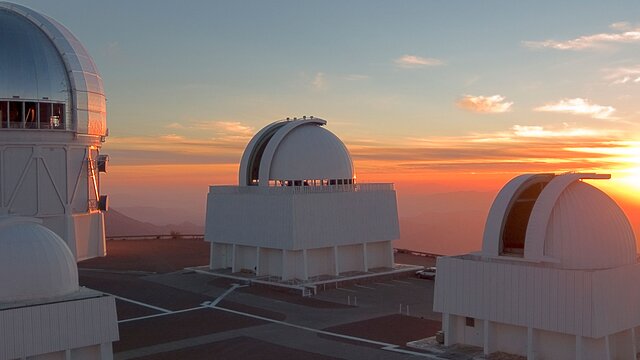NASA-supported research has revealed the fundamental role of telescopes located in Chile in advancing our knowledge of astronomy.
The telescopes, mostly located in the northern part of the country, have become windows to the universe in collaboration with NASA, unraveling cosmic mysteries.
Looking toward one of the clearest skies in the world, they make discoveries that underscore Chile's importance as a first-class astronomical center.
We tell you about some of the most notable projects in recent years:
A study of the plane of the Milky Way by the Cerro Tololo telescope
A flight study of the Milky Way at the Cerro Tololo Observatory in Chile marked a significant advance in astronomy.
The project managed to capture an astonishing 3.32 billion astronomical objects using a dark energy camera installed on a telescope at the laboratory. Including stars and galaxies in the Milky Way.
This study is notable not only for the large number of objects it was able to identify, but also for its breadth. Because it covers 6.5% of the night sky.
It was a two-year effort at a site located in the Elgi Valley. It focused primarily on the skies of the Southern Hemisphere and became one of the largest catalogs of celestial objects to date.
It provided an unprecedentedly detailed view of our galaxy, giving astronomers a valuable tool for studying the structure and composition of the Milky Way.
And, it not only improved our understanding of the galaxy we live in, but also opened doors to new questions and discoveries about the universe.
BlackGem project to track gravitational waves
The BlackGem project, located at the La Silla Observatory in Chile, plays an important role in gravitational wave research.
The project uses a set of three new telescopes installed in the Coquimbo region to monitor the origin and phenomena of these waves, which are generated by catastrophic events in the universe, such as black holes or neutron star collisions.
What sets BlackGem apart from other observatories is its ability to identify visual copies of these waves.
Although observatories such as LIGO (Laser Interferometer Gravitational-Wave Observatory) and the Virgo interferometer are designed to detect gravitational waves, they have limitations in accurately determining the origin of these waves.
They can usually narrow down the location of a source to a large area of the sky, but not with the precision needed to fully understand the phenomenon.
By contrast, BlackGem can quickly scan large areas of the sky with high resolution by using visible light. Allows you to systematically detect sources of gravitational waves.
This ability of BlackGem to detect both gravitational waves and their visible counterparts provides a more complete understanding of these cosmic phenomena.
In addition, it allows detailed observations of processes occurring at these junctions, such as the formation of heavy elements. This combined approach of studying both gravitational waves and visible light provides a rich and comprehensive view of extreme cosmic events.
Project ALERCE: The Intrusion of AI
The ALERCE project is an astronomical initiative led by Chilean researchers that will play a fundamental role in data processing from the Vera C. Rubin Observatory, which will begin operating in the Coquimbo region in 2024.
The project combines astronomy and big data techniques to study phenomena such as supernovae, supermassive black holes and asteroids.
Selected as the sole Chilean representative to operate the observatory's data classification and early warning systems, ALERCE will use artificial intelligence to analyze large amounts of astronomical data.
This project represents a significant advance in data astronomy. Also, an important milestone for astronomical research in Chile.
Recently, the journal Forbes It highlighted the program for its discovery and significant contribution to astronomy CMM.
Telescopes in the Sky of Chile
The Stratospheric Observatory for Infrared Astronomy, called SOFIA, made its first trip to South America in March 2023 when it landed in Santiago, Chile.
SOFIA, aboard an adapted Boeing 747, has carried out eight science flights. The flights focused on studying the Milky Way's neighboring galaxies, the Large Cloud and the Small Magellanic Cloud.
The project stood out for its ability to capture detailed images of these galaxies, taking advantage of the unique perspective offered by the Southern Hemisphere.
These projects in our country not only strengthen Chile's position as a leader in astronomy through our telescopes. Likewise, they emphasize the importance of international cooperation in advancing scientific knowledge.

